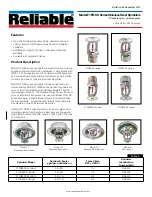
1-4
|
ni.com
Chapter 1
Getting Started
To avoid ESD damage in handling the device, take the following precautions:
•
Ground yourself with a grounding strap or by touching a grounded object.
•
Touch the antistatic package to a metal part of your computer chassis before removing the
device from the package.
Remove the device from the package and inspect it for loose components or any other signs of
damage. Notify NI if the device appears damaged in any way. Do not install a damaged device
in your computer or chassis.
Store the device in the antistatic package when the device is not in use.
Device Self-Calibration
NI recommends that you self-calibrate your M Series device after installation and whenever the
ambient temperature changes. Self-calibration should be performed after the device has warmed
up for the recommended time period. Refer to the device specifications to find your device
warm-up time. This function measures the onboard reference voltage of the device and adjusts
the self-calibration constants to account for any errors caused by short-term fluctuations in the
environment. Disconnect all external signals when you self-calibrate a device.
Note
(NI PCIe-6251/6259 Devices)
Connecting or disconnecting the disk drive
power connector on M Series PCI Express devices can affect the analog performance
of your device. To compensate for this, NI recommends that you self-calibrate after
connecting or disconnecting the disk drive power connector, as described in the
section.
You can initiate self-calibration using Measurement & Automation Explorer (MAX), by
completing the following steps.
1.
Launch MAX.
2.
Select
My System»Devices and Interfaces»
your device
.
3.
Initiate self-calibration using one of the following methods:
•
Click
Self-Calibrate
in the upper right corner of MAX.
•
Right-click the name of the device in the MAX configuration tree and select
Self-Calibrate
from the drop-down menu.
Note
You can also programmatically self-calibrate your device with NI-DAQmx,
as described in
Device Calibration
in the
NI-DAQmx Help
or the
LabVIEW Help
.
















































